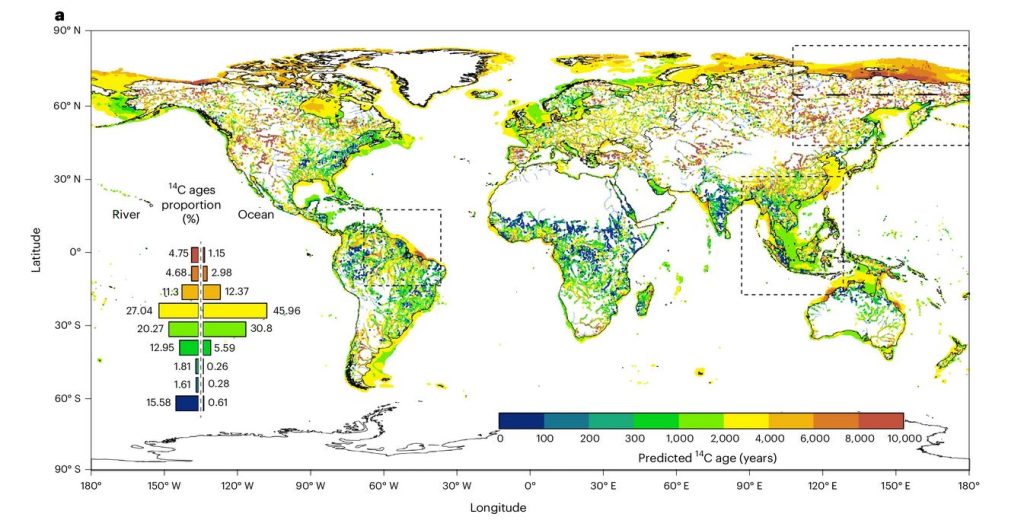Storing carbon in ocean depends on carbon age
Age of organic carbon forms an important factor in carbon storage in the ocean.
The ocean can store carbon and act as a carbon sink, or it can release the greenhouse gas CO2 and be a carbon source. In a new NESSC paper, published in Nature Geosciences, researchers found out when the ocean acts as a carbon sink and when as a source. This way, scientists from Nanjing universities and Utrecht University have created the first sink or source world map that can be used when deciding where to invest in organic carbon storage in the ocean.
Plants convert carbon from the air into solid material. When a plant dies, most of this carbon is released back into the air, but a small part ends up in the sea because it was carried away by a river. When the plant material in the sea is buried by sediment, the carbon is not released into the air and is stored in the sediment.

Blue carbon
Approximately 300 million tonnes of organic carbon are buried under sediment worldwide every year. This carbon comes not only from plant material, but also from soils, eroded rocks, algae, seaweed and animal material. Carbon stored in the ocean is also called blue carbon.

Sink of source
In theory, this system – plant material supply and sediment storage – should be in equilibrium, a ‘neutral’ system. “In reality things are a bit more complicated,” says dr. Junjie Wang, associate professor at Utrecht University and co-author of the new paper. “Not all organic carbon that enters the sea is buried under sediment, and some of the algae production in the sea is also buried.” Thus, the area between river and open ocean can become a carbon sink or source, depending on which carbon is buried.
Old or young
The age of the organic carbon affects whether the area becomes a source or sink, the new research shows. When rivers deliver young carbon to the ocean and old carbon is buried, the place is a carbon source. This happens, for example, in the deltas of the Amazon and Mississippi. Wang: “In these kinds of deltas, organic carbon from the land is converted into CO2 and emitted to the atmosphere.” Conversely, an area stores carbon when an accretion of old carbon arrives in an area while young carbon is stored in the sediment, as happens on the South African coast.
World map
The researchers created a world map showing the different ages of organic carbon along the coasts. “This is the first time this kind of data from both rivers and oceans has been aggregated in this way,” says Jack Middelburg, professor at Utrecht University and co-author of the paper. “This map can be used by policy makers and people working with blue carbon to see where best to start projects to preserve or capture more of the current carbon storage.”
Article:
Global patterns of organic carbon transfer and accumulation across the land-ocean continuum constrained by radiocarbon data
Wang, C., Qiu, Y., Hao, Z., Wang, J., Zhang, C., Middelburg, J.J., Wang, Y., Zou, X.
Nature Geoscience, 2024
https://doi.org/10.1038/s41561-024-01476-4

